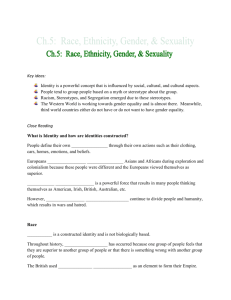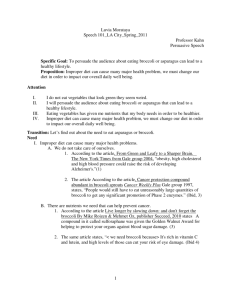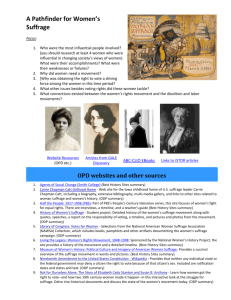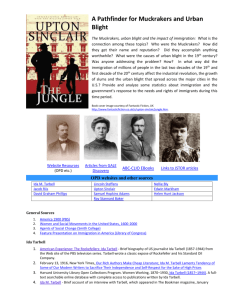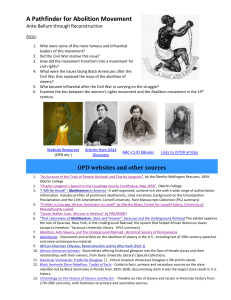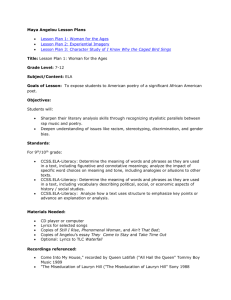Summary by Jueanville
advertisement
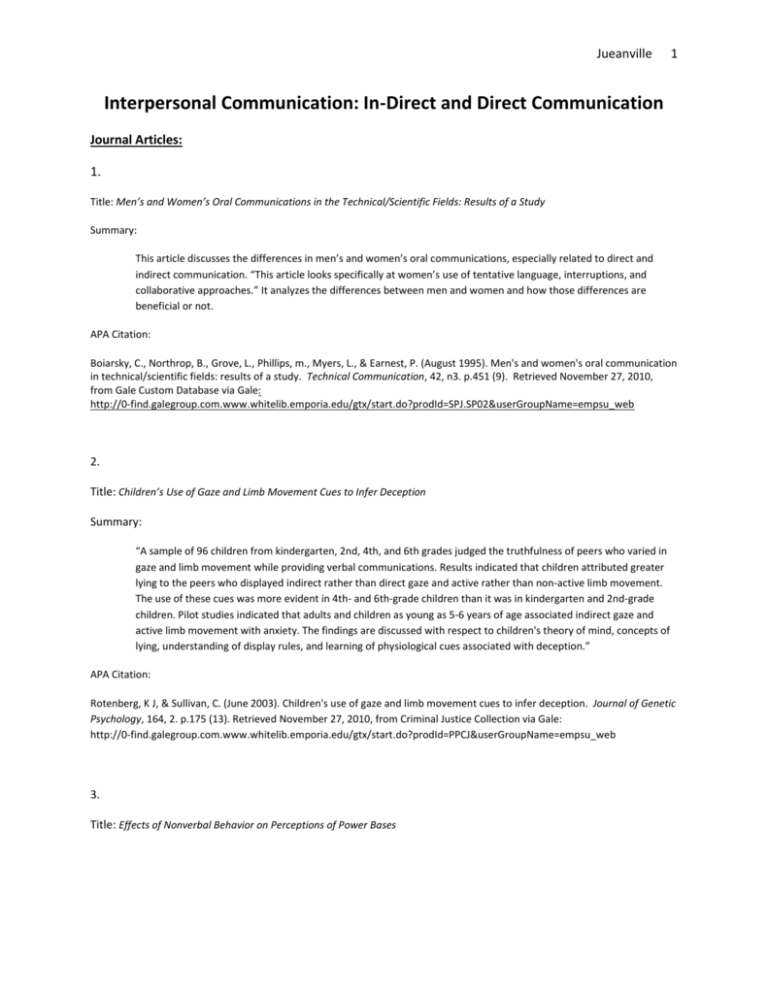
Jueanville 1 Interpersonal Communication: In-Direct and Direct Communication Journal Articles: 1. Title: Men’s and Women’s Oral Communications in the Technical/Scientific Fields: Results of a Study Summary: This article discusses the differences in men’s and women’s oral communications, especially related to direct and indirect communication. “This article looks specifically at women’s use of tentative language, interruptions, and collaborative approaches.” It analyzes the differences between men and women and how those differences are beneficial or not. APA Citation: Boiarsky, C., Northrop, B., Grove, L., Phillips, m., Myers, L., & Earnest, P. (August 1995). Men's and women's oral communication in technical/scientific fields: results of a study. Technical Communication, 42, n3. p.451 (9). Retrieved November 27, 2010, from Gale Custom Database via Gale: http://0-find.galegroup.com.www.whitelib.emporia.edu/gtx/start.do?prodId=SPJ.SP02&userGroupName=empsu_web 2. Title: Children’s Use of Gaze and Limb Movement Cues to Infer Deception Summary: “A sample of 96 children from kindergarten, 2nd, 4th, and 6th grades judged the truthfulness of peers who varied in gaze and limb movement while providing verbal communications. Results indicated that children attributed greater lying to the peers who displayed indirect rather than direct gaze and active rather than non-active limb movement. The use of these cues was more evident in 4th- and 6th-grade children than it was in kindergarten and 2nd-grade children. Pilot studies indicated that adults and children as young as 5-6 years of age associated indirect gaze and active limb movement with anxiety. The findings are discussed with respect to children's theory of mind, concepts of lying, understanding of display rules, and learning of physiological cues associated with deception.” APA Citation: Rotenberg, K J, & Sullivan, C. (June 2003). Children's use of gaze and limb movement cues to infer deception. Journal of Genetic Psychology, 164, 2. p.175 (13). Retrieved November 27, 2010, from Criminal Justice Collection via Gale: http://0-find.galegroup.com.www.whitelib.emporia.edu/gtx/start.do?prodId=PPCJ&userGroupName=empsu_web 3. Title: Effects of Nonverbal Behavior on Perceptions of Power Bases Jueanville 2 Summary: “Among a sample of U.S. students, the effects of 3 forms of nonverbal behavior (facial expression, visual behavior, and body posture) on perceptions of power bases (reward, coercive, legitimate, referent, expert, and credibility) were investigated. In contrast to previous investigations of nonverbal behavior and power, a precise construct definition and reliable and valid operational definitions of power were used, and specific perceptions of power bases were examined. A relaxed facial expression, compared with a nervous facial expression, increased the ratings for referent, reward, legitimate, expert, and credibility power bases. Also, direct eye contact yielded higher credibility ratings than indirect eye contact.” APA Citation: Aguinis, H., Simonsen, M M, & Pierce, C A (August 1998). Effects of nonverbal behavior on perceptions of power bases. The Journal of Social Psychology, 138, n4. p.455 (15). Retrieved November 27, 2010, from Criminal Justice Collection via Gale: http://0-find.galegroup.com.www.whitelib.emporia.edu/gtx/start.do?prodId=PPCJ&userGroupName=empsu_web 4. Title: Coping with Differences in Culture and Communication in Healthcare Summary: Internationally recruited nurses (IRNs) provide valuable resources to address existing and predicted nurse shortages. Once in employment many IRNs experience difficulties due to differences in language and culture in their new country of practice. Barriers to effective communication have implications for all nurses but particularly those functioning in a second language and culture. This article suggests strategies for IRNs, UK-educated nurses, managers and policy makers to improve the experience of IRNs and to ensure patients receive the best possible care. APA Citation: Hearndon, Margaret. (2008). Coping with Differences in Culture and Communication in Healthcare. Nursing Standard. (2008). 23(11), p49-59. 5. Title: Leaders need to Recognize Communication Styles Summary: The article identifies different types of direct and indirect communication styles such as the socializer, the thinker and the director. APA Citation: Dreeke, R. K. (2009, July). Leaders need to recognize communication styles. The FBI Law Enforcement Bulletin, 78(7), 20. Retrieved from http://0ic.galegroup.com.www.whitelib.emporia.edu/ic/suic/MagazinesDetailsPage/MagazinesDetailsWindow?displayGroupName=Magazines&prodId=SUIC&action=2&cat Id=&documentId=GALE%7CA203929617&userGroupName=empsu_web&jsid=af15d23403c5a804249ecbcbbb969857 5. Title: Computer-mediated Conversations as a New Dimension of Intercultural Communication between East Asian and North American College Students Jueanville 3 Summary: This article discusses how communication differs between East Asians and North American college students concerning face to face interaction or online/computer network interaction. It also examines the perceptions of each group and attempts to analyze the differences. APA Citation: Ma, Ringo. Computer-mediated Conversations as a New Dimension of Intercultural Communication between East Asian and North American College Students. http://englishnet.or.kr/class/CMC2005/intercultural_communication.pdf 6. Title: Japanese Companies in Germany: a case study in cross-cultural management Summary: “From a series of qualitative interviews with Japanese managers and German managers and workers in thirty-one Japanese-owned companies in the Dusseldorf region of western Germany, this article discusses differences in cultural patterns and organizational styles between the German and Japanese employees and the problems these pose for communication, cooperation, and morale. First, we deal with cultural contrasts: language issues, interpersonal styles (personability and politeness), and norms regarding the taking of responsibility. Second, we examine the impact on cross-nationality relations of established organizational practice: for example, German specialism vs. Japanese generalism; direct and vertical vs. indirect and incremental decision making. We also discuss efforts by these firms to find compromise systems that would meet the needs and interests of both sides. . . . In the labor view, Japanese firms overall do no better or worse than comparable German firms.” APA Citation: Lincoln, J R, Kerbo, H R, & Wittenhagen, E. (July 1995). Japanese companies in Germany: a case study in cross-cultural management. Industrial Relations, 34, n3. p.417-440. Retrieved November 27, 2010, from LegalTrac via Gale: http://0-find.galegroup.com.www.whitelib.emporia.edu/gtx/start.do?prodId=LT&userGroupName=empsu_web WEB: 1. Definitions of Interpersonal Communications and Indirect/Direct Channels of Communication http://www.selfgrowth.com/articles/Definition_Interpersonal_Communication.html 2. Differences between Direct and Indirect http://www.yourofficecoach.com/Topics/direct_or_indirect_communicator.htm




![DBQ Citations [Direct and Indirect]](http://s2.studylib.net/store/data/005429647_1-368ff05a656398a459c47105833e4c53-300x300.png)


